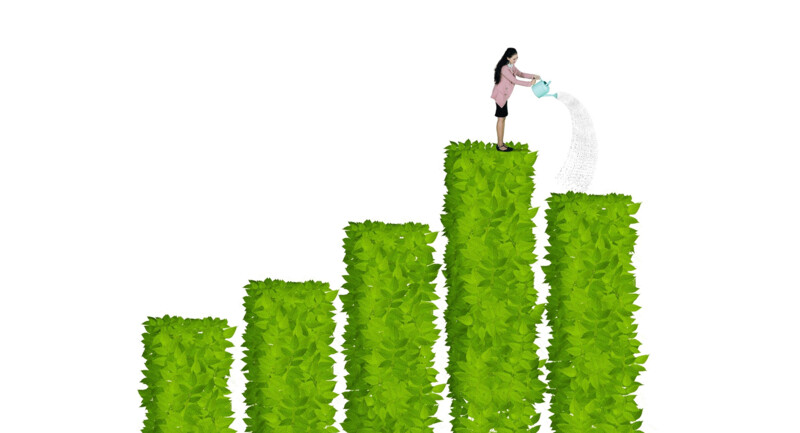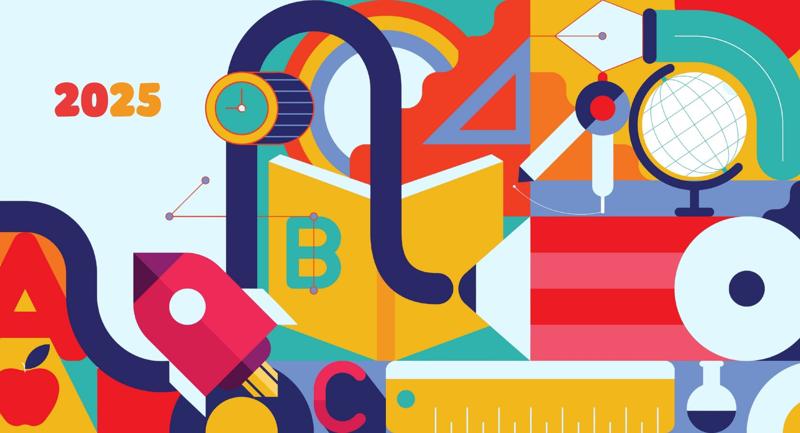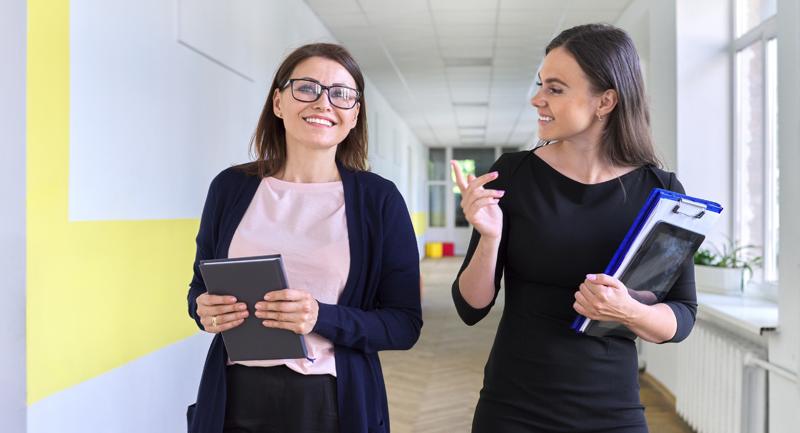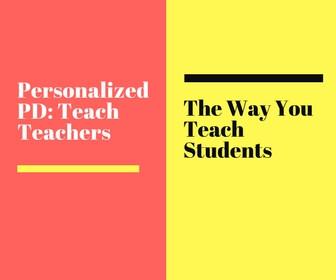Collective efficacy occurs when teachers in a school believe that, as a team, they have the power to help their students learn more effectively—and this belief is based on their own shared experiences of success. A culture of collective efficacy does not simply happen; it is built intentionally.
I have learned this in my work at Lead by Learning, a nonprofit connected with the Mills College School of Education that partners with schools and districts to foster collective efficacy. At the beginning of the school year, teachers and leaders in these partnerships often have a strong sense of their goals but struggle with determining how to achieve them.
Below are three actions we’ve found can help school and district leaders find a path forward and begin building a culture of collective efficacy.
Action #1: Embed a Routine Practice of Public Learning
Collective efficacy requires making teacher learning visible. Teachers need to be able to take stock of their own success, and to do that, they must have opportunities to see their growth over time. Our routine practice of public learning invites teachers to engage in a repeated, low-stakes practice of telling everyday stories about what their students are learning, with a primary focus on moments of uncertainty, confusion, struggle, or doubt. Educators show short video clips of students engaged in a particular task, share interviews with young learners, or show student work connected to a learning goal from that day that feels messy. Then educators invite the group to weigh in on how they can better address the real-time challenges and uncertainties their students face.
Teachers use the following prompts to step into a public learning stance:
“I would like your support understanding how to help my students get better at...”
“This feels important because...”
“When I look at my data, I am noticing…but I am hoping to see…”
“A challenge I am facing is...”
“A question I have is...”
Openly sharing these learning challenges requires a willingness to be vulnerable. But that vulnerability, specifically when associated with a teacher’s own learning, is critical to building a transformative culture of collaboration, collective efficacy, and partnership in pursuit of equitable student outcomes.
Action #2: Periodically Pause to Reflect and Celebrate Teacher Learning Over Time
Periodic pauses to synthesize and celebrate bigger takeaways at pivotal points in the year, typically December and May, help teachers collectively see their progress as professional learners. To make this happen, whether in grade-level teams, department groups, or as a whole staff, teachers pause their normal collaborative routines to reflect on and share what they have learned about their practice over the last few months. The experience of crafting, telling, and hearing each other's bigger-picture journeys from uncertainty to greater effectiveness and understanding is a culture-building strategy that fosters teacher collective efficacy.
The following prompts help educators frame their story about their own increasing instructional capacity:
Where did my learning journey begin? What was I grappling with?
What were the key turning points or realizations in my learning journey?
What was the impact of my learning on myself or my students? How has my learning furthered equity in my classroom?
What do I want to carry forward? What am I wondering now?
Reflecting on their own progress helps teachers believe in their ability to further impact more students. And creating spaces to publicly share teacher learning stories at pivotal moments in the year, and reflecting on those stories afterward, is an essential strategy in building awareness of progress and success. Simply sharing their answers to prescribed prompts at a meeting is not enough. Teachers also need time to reflect on any shared takeaways that emerge from their stories and how they might put them into practice.
Action #3: Use Knowledge Management Tools to Help Make Teacher Learning Visible
Without opportunities to document their unfolding learning over time, teachers and leaders alike may reach those pivotal moments of the year and wonder, Did anything important happen for me as a learner this year? Did we get anywhere as a group?
To avoid this pitfall, knowledge management tools are vital to teachers’ ability to build awareness of their efficacy. One tool we particularly like to build awareness of progress over time is a Teacher Learning Table.
Periodically, we invite educators to pause and synthesize the key elements of their learning—their learning goals for students, data sources, indicators of success, changes in practice, and key shifts in thinking—on a single document with a row for each teacher.
Sample Teacher Learning Table:
With input from each teacher, the Teacher Learning Table can be read horizontally to understand an individual teacher’s learning story, or vertically to see patterns and similarities between teachers’ stories. This vertical reading in particular builds an awareness of the types and magnitude of progress happening as teachers reflect and adapt over the course of the year—as well as areas where progress has stalled.
With a heightened awareness of their own effectiveness in contrast to failures, teachers both know what strategies are working and feel confident that they can continue to positively impact student learning. As a group, they can name their strengths as a community of educators and identify opportunities for further alignment in the strategies they use to support students. Opportunities to write in and reflect on the table should be regular and brief. We like to offer five minutes at the close of each public learning session for teachers to update their thinking and review their colleagues’ responses. Longer pauses for reflection on their unfolding learning can happen a few times a year (see Action #2, above).
Notably, facilitators of this learning exercise have an important role in framing its purpose: To make teachers’ learning visible to themselves—not to inform site leadership whether teacher learning is happening.
As consultants, we always remind our teacher and leader partners: “This tool is to support your learning and development, not to prove your competence.” To educators who are accustomed to cultures of accountability, these documents can seem like tools to enforce compliance rather than to spark curiosity about emerging understandings. To avoid this pitfall, we make it clear that the purpose of the table is to support teachers’ awareness and agency as learners. We do not critique or evaluate teachers’ responses; rather we offer opportunities for them to reflect on their own responses to appreciate their own and colleagues’ learning. By storing the table as a digital file in a shared folder accessible and editable by all teachers, we communicate that its ownership resides with the learners.
Sharing the Story of Collective Efficacy
Adult learning facilitators have an important role to play in crafting the collective narrative that helps teachers believe in their own ability to effect positive outcomes, just as teachers have an important role in crafting the narrative students tell themselves as learners. Through strategic gathering and sharing of teacher feedback data, plus intentional pauses to reflect in partnership on the unfolding arc of the group’s learning, leaders can help build collective efficacy and develop their own learning stances.
By taking time during grade-level meetings, department meetings, or staff meetings to share trends, patterns, and quotes from teachers’ own feedback, leaders can help reinforce teachers’ belief in their efficacy as a group, which is a powerful lever for systems change and a foundation for success.








